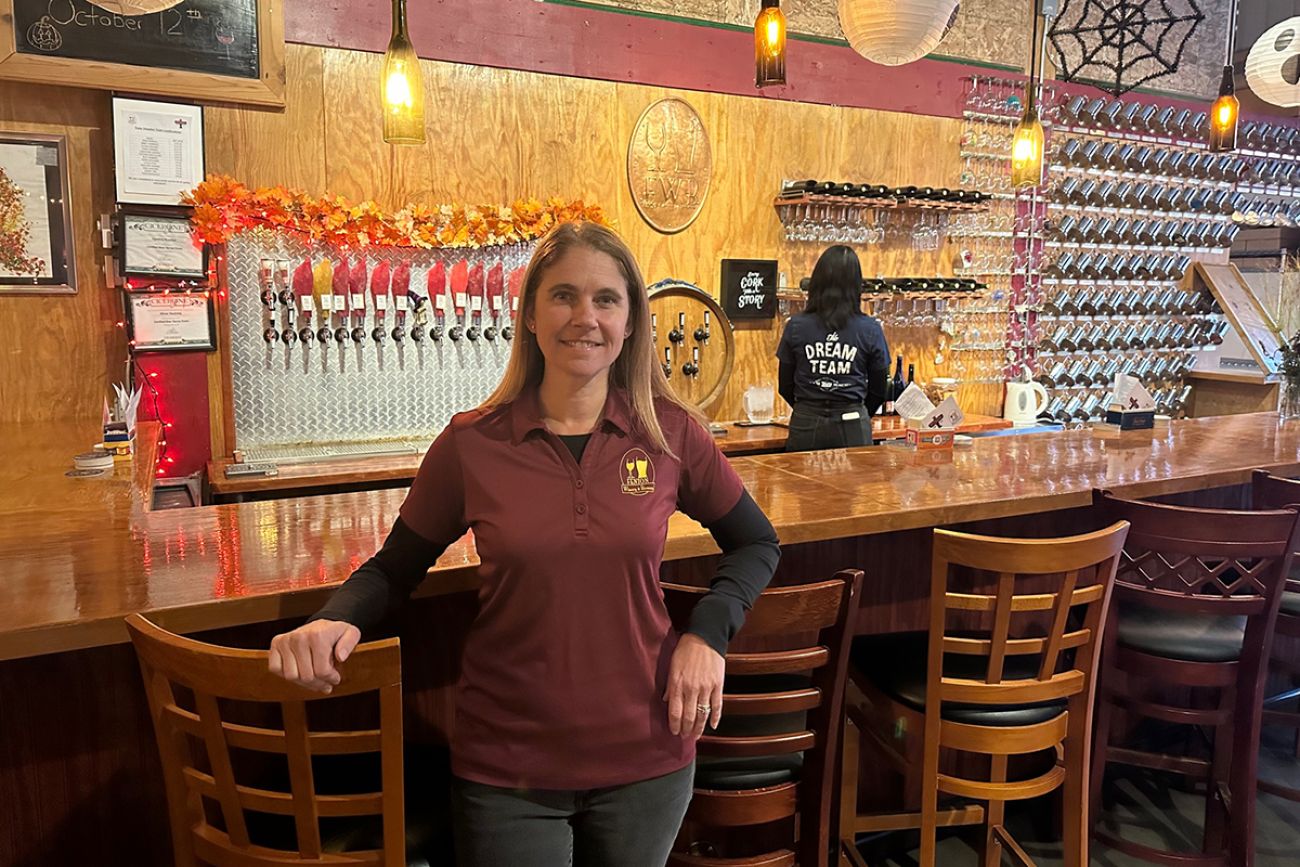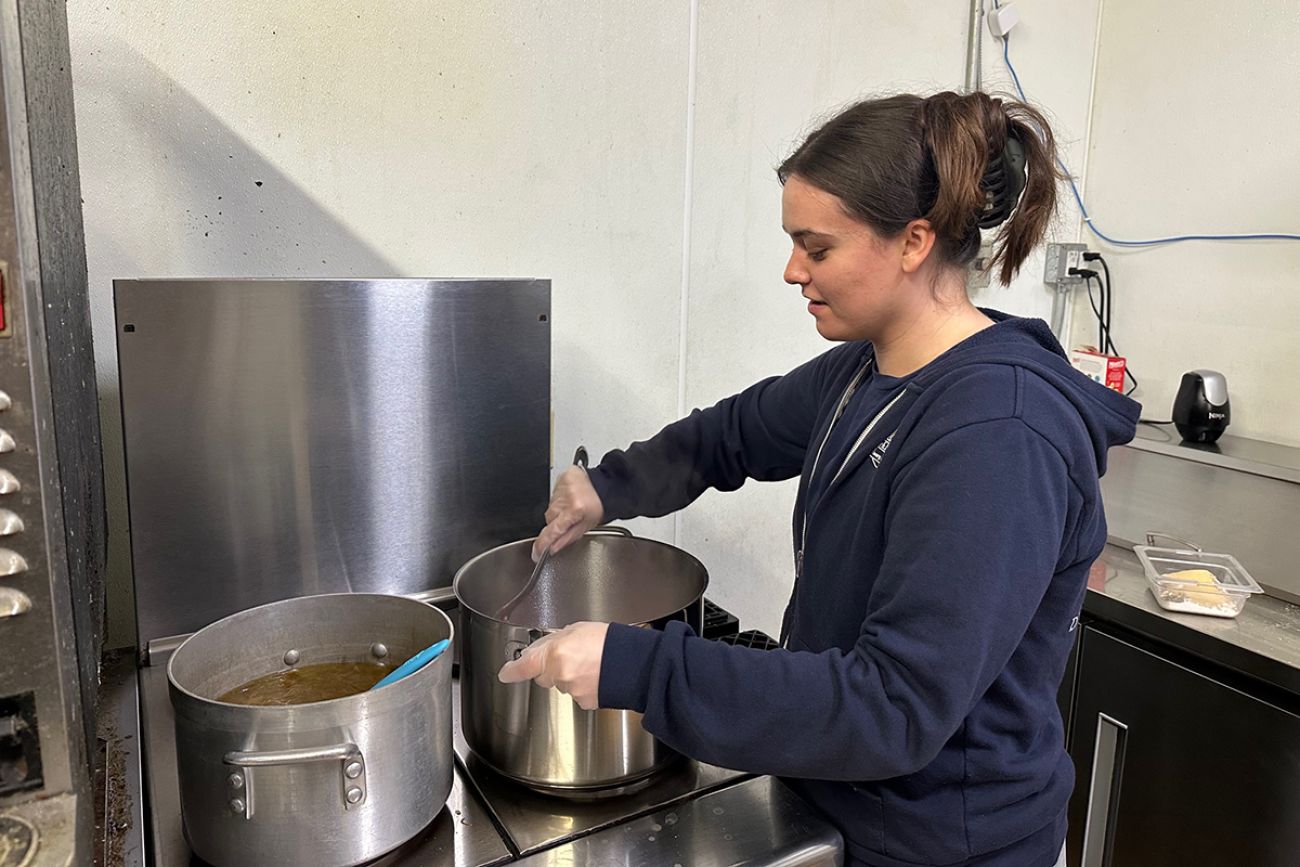Wine apprenticeships? Michigan’s worker shortage makes businesses get creative

- Michigan is investing $90 million in apprenticeship programs to help businesses and workers
- The programs are tailored to meet the needs of individual businesses
- Grants pay for most, if not all, of class costs
FENTON — For years now, Fenton Winery & Brewery co-owner Ginny Sherrow hasn’t found enough workers for the Genesee County tap room and banquet facility. She’s raised server salaries, with some earning as much as $24 an hour, offered health insurance and even a matching 401(k) program, but remains short of the number of cooks and wait staff for her growing business.
Facing her own problems is Samantha Trelfa, who spends her mornings prepping pizza dough for the evening rush of customers at Sherrow’s tap room. She is a single mom who said she knows she is being held back financially by a lack of post-high school credentials. The 28-year-old tried going to college once, but had to work two full-time jobs to pay tuition and household bills, and couldn’t maintain the pace.
Today, both say they are hopeful a state-funded apprenticeship program can solve some of their problems. Sherrow’s business gets an employee who is likely to stick around through the length of the apprenticeship and receive training through community college classes, and another enticement to attract more workers.
Related:
- In Michigan mental health crisis, a tug-of-war over too few social workers
- Lack of school counselors hobbles Michigan college enrollment efforts
- Munson to trim inpatient services at rural northern Michigan hospitals
- Michigan has more job openings than workers. Are retirees the answer?
“This is a win-win for the employer and the employee,” Sherrow said. “I have the opportunity to help people skill up and go into a career and be able to take care of themselves and their family. And from the employer perspective, it's a great tool for recruiting.”
Apprenticeships are an old-school solution to a new problem in Michigan, with the state’s economy currently hobbled by worker shortages from child care to police to social workers. With a current unemployment rate of 3.9 percent, public and private employers alike are struggling to fill openings.
Meanwhile, the state’s workers have, on average, less college education or postsecondary training than the average in the U.S., meaning there is sometimes a mismatch between jobseekers and job openings.
That’s true at Sherrow’s business, which opened as a winery in a strip mall 17 years ago, and has grown to include a brewery, distillery and a banquet hall that hosts about 100 weddings a year.
The company needs about 45 employees to function on all cylinders and has 37.
A lot of people left the hospitality industry during the pandemic and never returned, Sherrow said. She hopes an apprenticeship program at the company will be both a draw for new employees, and a way to boost skills of current workers.
In July, two current employees were the first to begin apprenticeships. They’ll continue to work full-time (with the company paying their salaries) and take one to two classes per semester at Mott Community College in Flint, on subjects ranging from sanitation to soups to restaurant pricing that are designed in collaboration with the winery staff. At the end of a 36-credit program, they’ll receive certification as professional cooks.
Key to the expansion of apprenticeships are grants that make the classes, carrying a total sticker price of about $5,400, free to students.
The administration of Gov. Gretchen Whitmer has made community college free for many Michigan residents through the Michigan Reconnect program. That program and parallel initiatives, totaling $90 million in a mix of state and federal funding, offer financial support for career certifications through trade schools. The MiSTAIRS program offers grants to support apprenticeship programs.
There are currently almost 18,000 registered apprentices across the state, which, according to the Department of Labor and Economic Opportunity, puts Michigan sixth in the nation. The number of apprentices in the state has been roughly level since at least 2019, according to state data.
Apprenticeships provide “life-changing opportunities for our state’s workers and support for Michigan businesses,” LEO Director Susan Corbin, told Bridge Michigan in a written statement. “We are committed to helping people secure high-paying jobs while helping employers develop and retain the highly-skilled talent they need to grow and prosper.”
Trelfa calls the apprenticeship a “dream come true.”
“My passion is cooking,” she said. “Since I was 3, I've wanted to be a chef. This opportunity arose and they asked me about it, and it just kind of fell into place.”

Because apprenticeships are coordinated with the businesses, the classes are held at times that don’t interfere with work schedules.
“These are customizable programs,” said Wanda Bigelow, apprenticeship manager for Michigan Works regional office that includes Genesee County.
The Fenton Winery & Brewery apprenticeship program is one of 18 being coordinated by the regional office of Michigan Works. For example, Bigelow makes sure that apprentices have financial aid paperwork filled out properly and directs funding to Mott.
“I have a board of employers I’m working with now,” Bigelow said. “We’re getting calls in quite often (from companies considering apprenticeship programs). A lot of times they’re already doing the training. All we’re doing is putting their policies and procedures into a format that the (U.S.) Department of Labor wants to see (to certify apprenticeships).”
Trelfa is just at the beginning of the program, but finally, she’s excited about the future. “I'm super thankful,” she said. “I think that this will bring in a lot of people who feel the same way that I do, and hopefully give them the same opportunity to grow not only within the business itself, but in life.”
Michigan workers vacancies
In this occasional series, we examine the scope of critical worker shortages in 2023, from doctors and police officers to math teachers and social workers. To view more stories in this series click here.
Business Watch
Covering the intersection of business and policy, and informing Michigan employers and workers on the long road back from coronavirus.
- About Business Watch
- Subscribe
- Share tips and questions with Bridge Business Editor Paula Gardner
Thanks to our Business Watch sponsors.
Support Bridge's nonprofit civic journalism. Donate today.
See what new members are saying about why they donated to Bridge Michigan:
- “In order for this information to be accurate and unbiased it must be underwritten by its readers, not by special interests.” - Larry S.
- “Not many other media sources report on the topics Bridge does.” - Susan B.
- “Your journalism is outstanding and rare these days.” - Mark S.
If you want to ensure the future of nonpartisan, nonprofit Michigan journalism, please become a member today. You, too, will be asked why you donated and maybe we'll feature your quote next time!




